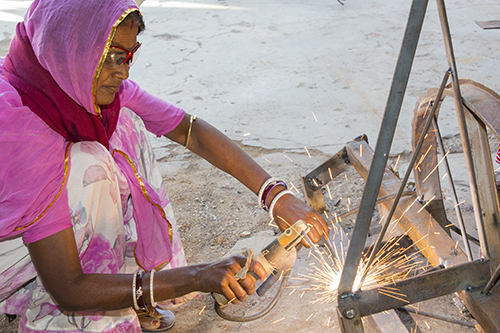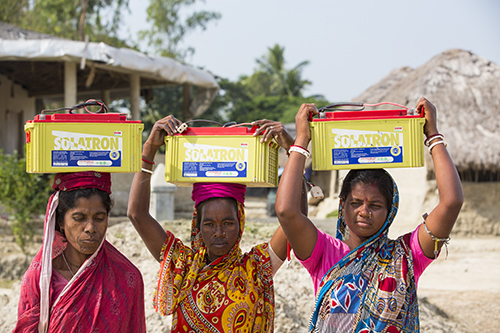Ashley Cooper is a photographer with a mission, and it is an important one: to document the effects of climate change on every continent on the planet. Since 2004 when he started, he has visited all of the continents except South America. In the process he has seen the deterioration of the environment for the people in the poorest parts of the world. Ironically these are the people who have contributed least to the problem – those with the smallest carbon footprints.

He has a background in geography and geology, but photography was always very important to him. He gravitated to taking photos of his favorite things, wildlife, nature, landscapes, and anything outdoors. He was a semi-pro photographer looking for a major project when 15 years ago he learned about climate change. Back then few people knew about it, or were interested at all. He read as many scientific papers as he could, and realized he wanted to document the effects.
His first trip, in September 2004 was to Alaska. He spent four or five months planning the trip. The objective was to photograph the retreats of glaciers, permafrost melting, and the effects on the trees and forests of the region. He went to a tiny outcrop of land off Alaska, near the Bering Sea, called Shishmaref Island, home to 600 Inuit who have lived there for thousands of years and scarcely changed their lifestyle. As the permafrost ice melts, the winter storms can then wash away peoples’ houses. The island is so small – only half a mile wide – there is nowhere to retreat to. Scientists expect the island to be completely swallowed by the sea within a few years. “The impact on Alaska is very in-your-face and dramatic. All the roads are potholed as the melting collapses their foundations,” Ashley says, “Bad storms can tear big chunks out of the island.” The Inuit people who live there are very connected to nature and have seen dramatic changes in the weather patterns over recent years. This really brought home to him the effects on people were much more dramatic and destructive than technical scientific articles could convey and he decided to make this the center of his photography, because it can communicate the impact of global warming with greater immediacy than words.

Two years ago he received WWF International sponsorship which enables him to visit various places to photograph the effects of global warming/climate change. “I have spent the last 11 years traveling the planet documenting the impacts of climate change. My shoots have taken me to many locations, but can be pretty depressing, when you see the damage being wreaked upon the environment by climate change. My shoot to India was so uplifting, to see how communities are having their lives enriched by access to heat and power, all provided by renewable energy. It was humbling to see how a single solar panel the size of an A4 sheet of paper is enough to charge a battery, which will give light to a house overnight. Prior to the introduction of the solar panels, people used kerosene lamps for light.” Over one million people, mainly women and children, die annually from inhaling the fumes. Having solar electricity, in places that have never been near the grid, can make a huge difference to people’s lives: their health is no longer at risk, they can have light for their children to do homework, or earn some money by sewing. It is a huge improvement in the quality of their lives.

He has also visited Antarctica this year and documented some of the effects there.”Antarctica is the most remote, pristine, unspoilt continent and the coldest on the planet. Its remoteness from human activity can not protect it from the impacts of climate change. Temperatures on the Antarctic Peninsular have risen 2.8 degrees Celsius in the last 50 years, making it one of the fastest warming areas of the planet. This has led to 87% of the peninsula’s glaciers retreating, and a loss of 25,0000 km square of sea ice from floating ice shelves.”

A lot the work he does can be depressing. He says, “My perspective is what I have seen in my various travels is very scary stuff. Climate change is the biggest risk humanity has ever faced. We should be doing much more to move from fossil fuels to renewable energy. Ironically the people who are least responsible and have the smallest carbon footprints are the ones suffering the most, like the Inuit and people on Polynesian islands like Tuvalu which are being swamped by rising sea levels.”
Ashley runs Global Warming Images – a photo-library which specializes in visually documenting the effects on the environment of climate change.

